In general food is important, but on extended wilderness trips the desire for it seems to occupy every minute of waking consciousness. It usually starts a few days into a trip, when your metabolism finally faces the reality of your energy demands. With physical activity taking up most of the day, ones stomach starts to feel like a furnace with no damper. Such an increase in caloric demand poses a challenge for the unsupported traveler, as this extra weight needs to be carried. So here we will answer one of our most frequently encountered questions:
‘What do you eat?’
The basic criteria for the food that we bring is that it is high in calories, compact, healthy, and easy to prepare. Common cultural assumptions of food fit for backcountry travel are, that it is inherently expensive, engineered with the latest technology, wrapped in special packaging, branded with an outdoor marketing strategy, or otherwise something that you would never eat on a regular day. Many instant meals designed for campers may be very lightweight, but they are often insufficient in calories and nutrients, especially considering how much they cost. From personal experience, they usually give me stomach upset, gas, and irregular bowels - not good while living in a small tent. Rarely in life will you ever appreciate food this much. Don’t ruin it by eating crap.
Ultimately our diets consist of very simple ingredients which I will share here, but we have also come up with a handful of special recipes and food preparations that have yielded great results. We begin preparing our trip food months before we embark. Our methods take extra care and time, but our food tastes great, fills us up, keeps us healthy, and our grocery bill doesn’t break the budget.
While on the trail, we cook hot breakfast and dinner along with a hot drink, often on a fire. This is also when we melt our drinking water. This year we are excited to be cooking on our Titanium Goat wood stove. During the day, stopping for lunch can be time consuming; using up precious daylight hours. Instead, we carry an arsenal of snackable foods and eat periodically when our body demands it. Feeling cold? Eat something. Tiered? East something. Mechanical difficulty? First, eat something. Cranky, discouraged, upset, or unsure about what to do? You got it. Food is crucial to maintaining a level head as well as your physical condition. Having it on hand makes it easy to keep up with your body's demand and ultimately helps you retain heat, feel good and enjoy yourself.
Almost everything we bring can be found in a regular grocery store, but ideally you can find a lot of this stuff in bulk and save some money. After purchasing our food, we ration it out into vacuum packs or freezer zip-lock bags and ship it to post offices along our route.
Breakfast
For breakfast we almost always eat cream-of-wheat. Oats would substitute fine, we both just like cream-of-wheat more. Both the oats and the wheat mostly serve as a vessel for the higher calorie ingredients including butter or coconut oil, brown sugar, powdered milk, dried fruit, and nuts. We also drink tea or cowboy coffee. This year we will experiment with our coffee by grinding it extremely fine in an effort to imitate those instant espresso packs. Either way, just skip on the last gulp.
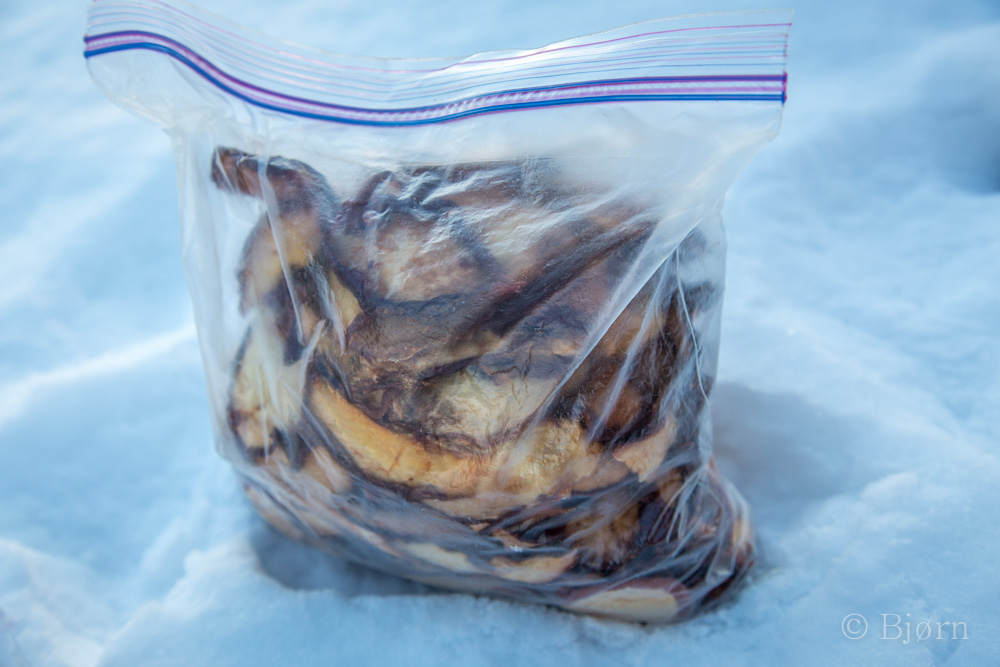
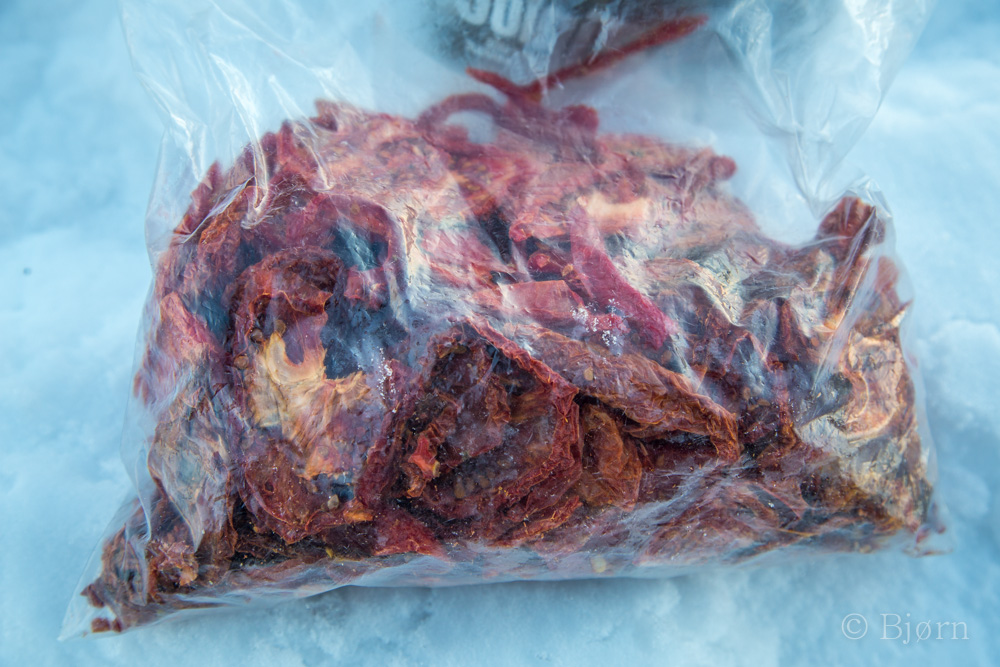
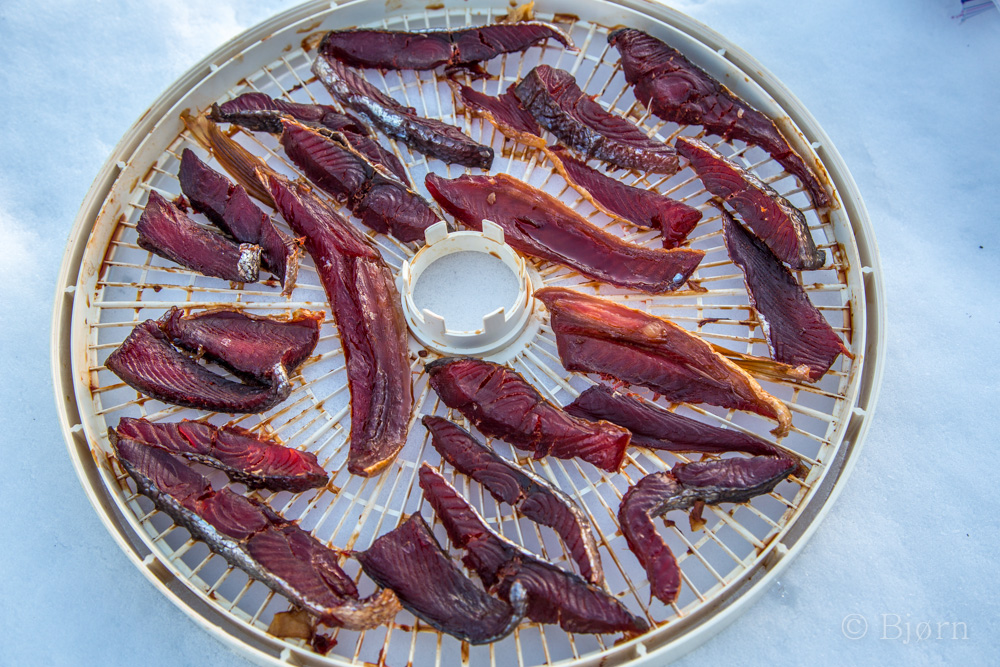
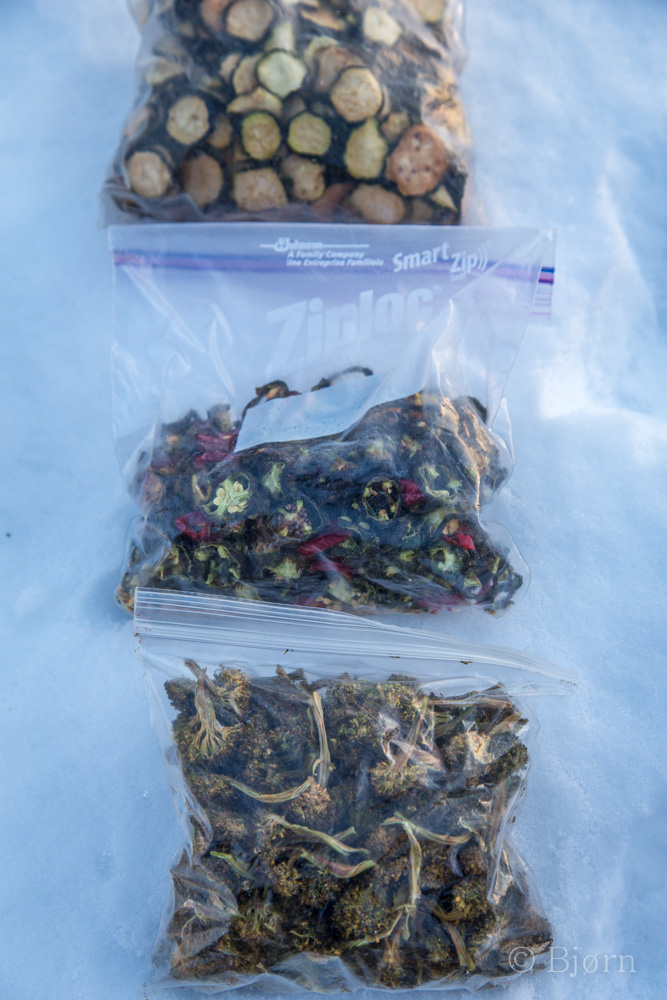
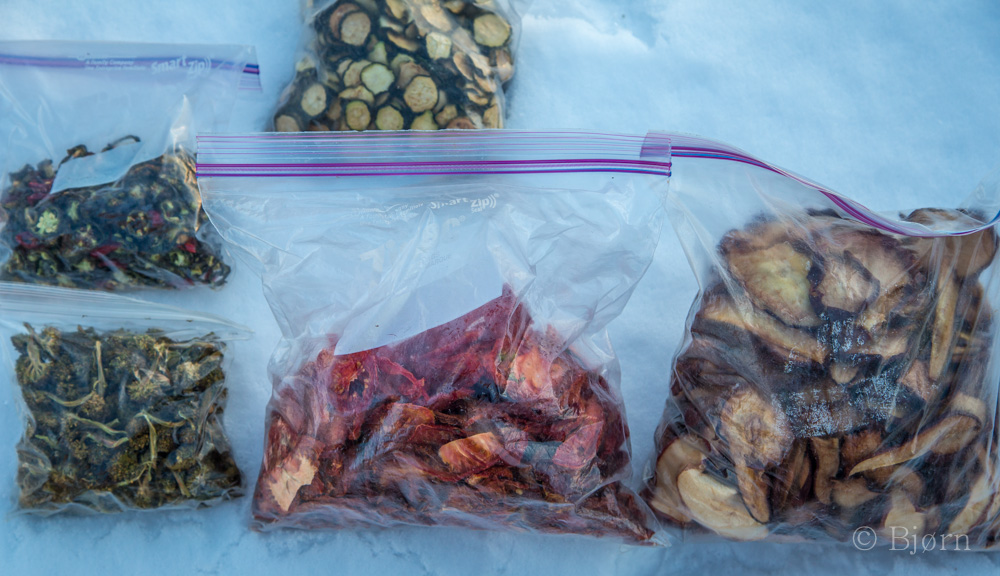
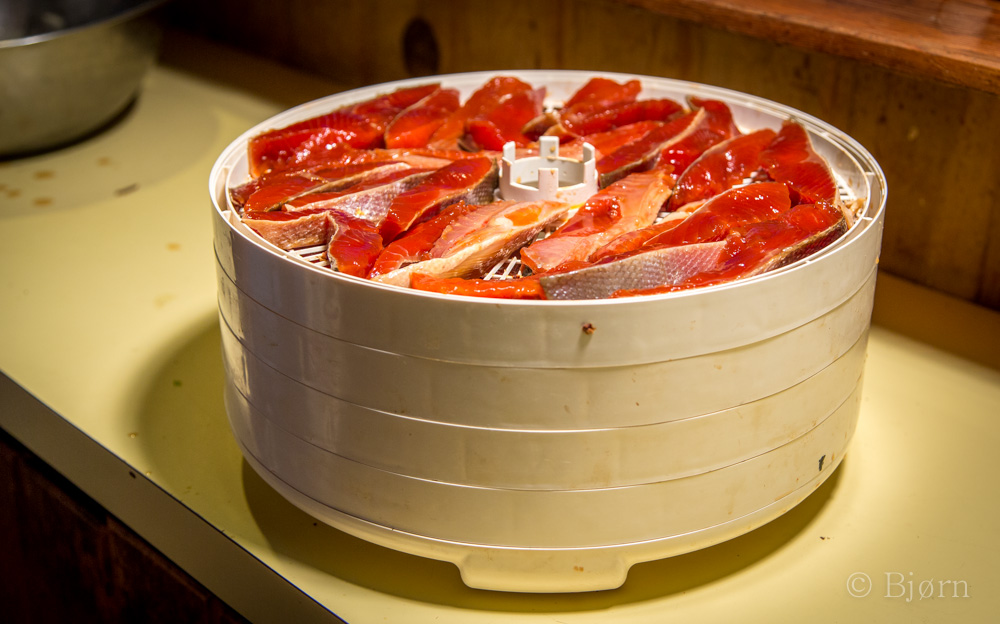
Lunch
Our daytime food includes dried salmon, dried fruit, nuts, trail mix, cheese, our homemade bars or store bought bars. I don’t have a preferred store bought bar, though Luna bars are one of my favorites. I like Cliff bars, but they are the consistency of a brick when frozen, so I stopped bringing them in the winter. Snickers bars have a lot of calories, but I don’t go with them exclusively because the sugar overdose is more than I can handle. We usually bring some kind of candy, and always chocolate, but overdoing the sugar has brought me to the verge of system failure on more than one trip. As with regular life, I recommend moderation.
Dried salmon is our best food. It is loaded with fat, protein and nutrients, is easy to eat anytime but can also be cooked with a meal. We catch it and process it ourselves. It has been a staple food for native people across the northern half of the continent for thousands of years, and has a proven credibility. Last July we caught our red (sockeye) salmon from the Kenai River with a dipnet. This is a wild salmon run and the fish are large and delicious. We fillet the fish and pack it in vacuum-sealed bags, and freeze it for storage. During the months before a trip we thaw and dry strips, in batches. Something that we want to experiment with is pemmican, which is a fat and nutrient dense food historically used in polar expeditions and is made from dried meat, melted fat, and dried fruit.
We dry most of our own fruit, usually pears, apples and bananas. It’s a great way to utilize over-ripe or mealy fruit that would otherwise be thrown out. We buy cranberries, cherries and dates, and get shipments of tropical treats from Bjorn’s family’s farm in Kona. Fruit isn’t super packed with calories, but bringing fruit is important to me because it keeps things working, if you know what I mean.
Dinner
We believe in cooking delicious dinners and mix up the ingredients every night, to keep it interesting. For the base we usually cook polenta, orzo, pasta-tini, quinoa, or spaghetti. These cook fast, expand greatly, and again, serve as a vessel for all the other goods. For flavor and salts we use bouillon cubes, powdered milk, nutritional yeast, powdered sauces and gravies of various sorts. Generous amounts of cheese (sharp cheddar and gorgonzola are our favorites), butter, and/or coconut oil are key for providing the fat that your body needs. We also add veggies that we dry ourselves and may put in any combination of tomatoes, peppers, zucchini, mushrooms, broccoli, kale, onions, or cabbage. Dried salmon can be added as well and re-constitutes nicely. A very helpful trick we have learned is to bring instant mashed potatoes and add them at the end to make your meal the right consistency. Most backcountry travelers have experienced soupy dinners; this is an easy way to avoid that problem. For drinks, a cup of hot chocolate is a nice end of the day treat, herbal tea, or miso soup with a pad of butter is also delicious.
For cookware we share a titanium pot and each have a titanium mug, a spoon or spork, and a 64 oz. thermos. I carry a fixed handle Buck knife that I love and use for many things, including food. Bjorn brings a leatherman, again for many uses, but the pliers are great for handling the hot pot and it has a knife. On many trips we also bring a steel bowl that fits inside the pot, but this winter we are forgoing it to save weight and space. We either pass the pot back and forth, or dole food into a mug.
Especial emphasis on hydration is required for winter travelers. You need to drink a lot of water to stay warm, prevent frostbite, and keep from getting cramps. We bring Emergen-C and drink it during the day, in attempt to maintain proper electrolyte balance. Remember, you’re asking a lot of you body, so give it what it needs. Drinking water seems simple enough, but the time and fuel required to melt water makes it tempting to go with less and the cold temperatures don’t make it particularly enjoyable. But the truth is that your metabolism requires water to function and keep you warm. So drink up. The best metric to understand if you are properly hydrated is the color of your urine. If it’s clear, you are hydrated. If it’s dark yellow, you need to drink more.
One trick we employ is to start the day with a full 64oz thermos of boiling or near boiling water. When we stop to drink, we add snow to our mug and melt it with the hot water. This is an easy way to stretch a smaller volume of water. It is also preferred to drink water as close to body temperature as possible, when it is cold, and boiling water mixed with snow is an easy way to achieve the desired temperature.
I encourage anyone who reads this to experiment with your own strategy. Everyone’s body is unique and trying things out is the best way to come up with a diet that works for you. I have personally learned that a lot of fat is really good for me, but that I need to get it from multiple sources (not just butter), that I have a threshold for sugar that should not be crossed, and that balancing my diet with fruit and veggies improves my performance. I would have never learned these things without trial, and yeah, a little discomfort. Hopefully this advice will streamline your experience.
Kim & Bjørn

